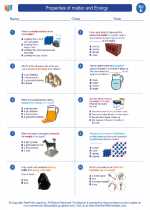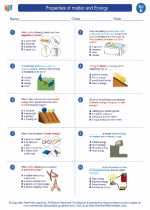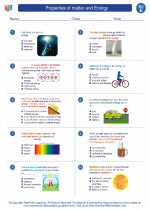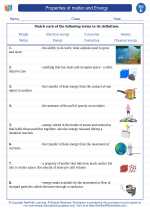Properties of matter and Energy -> refraction
Refraction
Refraction is the bending of light as it passes from one medium to another. This phenomenon occurs because light travels at different speeds in different mediums. When light enters a medium with a different density, such as air to water or air to glass, its speed changes, causing it to bend.
Cause of Refraction
The speed of light is different in different mediums due to their varying optical densities. When light travels from a less dense medium to a more dense medium, it slows down and bends towards the normal line. Conversely, when light travels from a more dense medium to a less dense medium, it speeds up and bends away from the normal line.
Examples of Refraction
Refraction can be observed in various natural phenomena and everyday experiences. Some common examples include the bending of a straw in a glass of water, the apparent bending of a pencil in a glass of water, and the formation of rainbows due to the refraction and dispersion of sunlight by water droplets in the atmosphere.
Factors Affecting Refraction
Several factors can affect the amount of refraction that occurs, including the angle of incidence, the difference in optical densities of the two mediums, and the wavelength of the light. These factors influence the degree to which the light is bent when it passes from one medium to another.
Study Guide
- Define refraction and explain the cause of this phenomenon.
- Provide examples of refraction in everyday life and natural phenomena.
- Discuss the factors that affect the amount of refraction that occurs.
- Explain how the speed of light in different mediums contributes to refraction.
- Compare and contrast the bending of light when it enters a more dense medium versus a less dense medium.
Understanding the concept of refraction is important in the study of optics and the behavior of light. It has applications in various fields, including the design of lenses, the formation of images in optical devices, and the study of atmospheric phenomena.
[Refraction] Related Worksheets and Study Guides:
.◂Science Worksheets and Study Guides Fifth Grade. Properties of matter and Energy

 Worksheet/Answer key
Worksheet/Answer key
 Worksheet/Answer key
Worksheet/Answer key
 Worksheet/Answer key
Worksheet/Answer key
 Vocabulary/Answer key
Vocabulary/Answer key
 Vocabulary/Answer key
Vocabulary/Answer key
